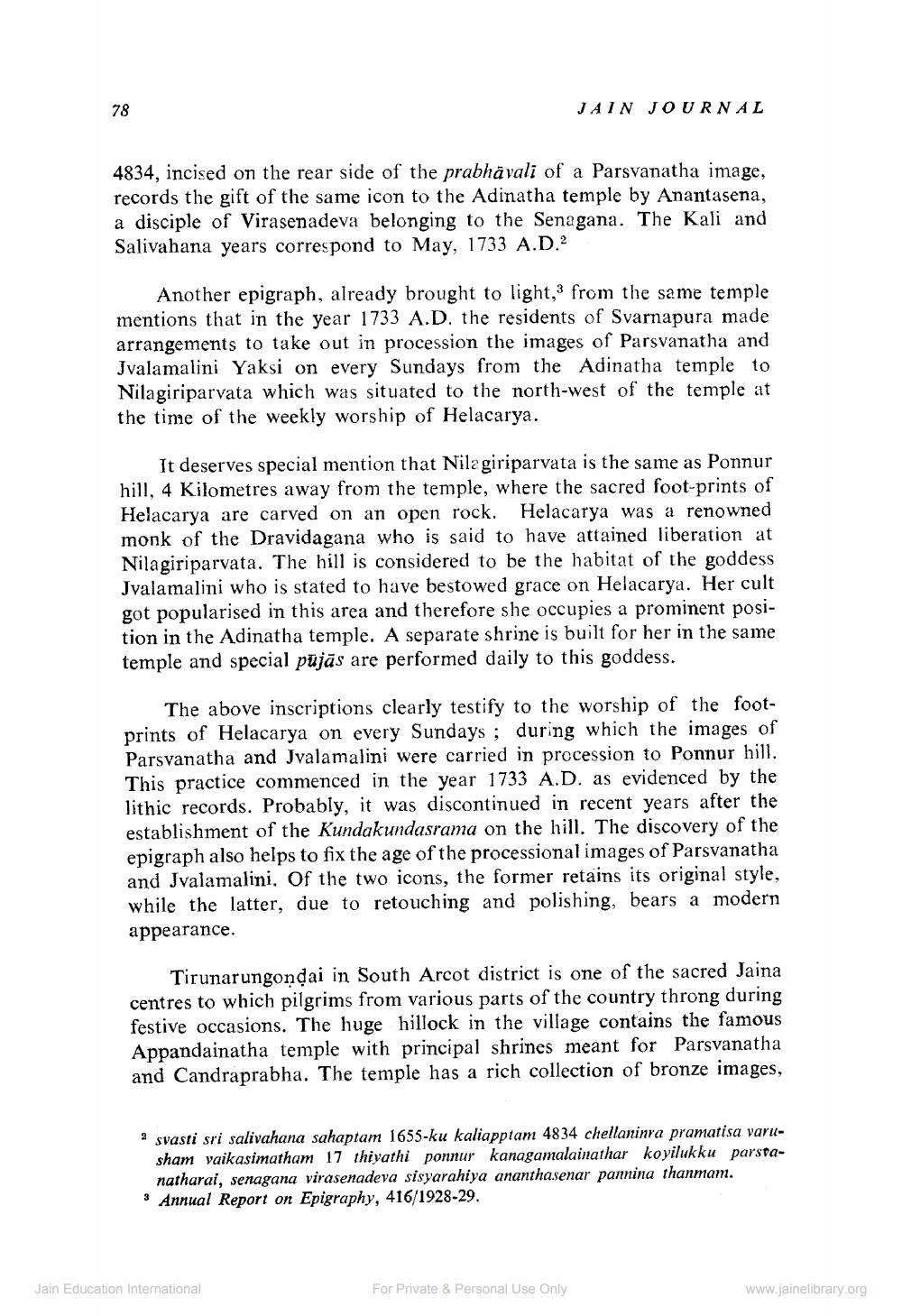________________
JAIN JOURNAL
4834, incised on the rear side of the prabhāvali of a Parsvanatha image, records the gift of the same icon to the Adinatha temple by Anantasena, a disciple of Virasenadeva belonging to the Senagana. The Kali and Salivahana years correspond to May, 1733 A.D.2
Another epigraph, already brought to light, from the same temple mentions that in the year 1733 A.D. the residents of Svarnapura made arrangements to take out in procession the images of Parsvanatha and Jvalamalini Yaksi on every Sundays from the Adinatha temple to Nilagiriparvata which was situated to the north-west of the temple at the time of the weekly worship of Helacarya.
It deserves special mention that Nilagiriparvata is the same as Ponnur hill, 4 Kilometres away from the temple, where the sacred foot-prints of Helacarya are carved on an open rock. Helacarya was a renowned monk of the Dravidagana who is said to have attained liberation at Nilagiriparvata. The hill is considered to be the habitat of the goddess Jvalamalini who is stated to have bestowed grace on Helacarya. Her cult got popularised in this area and therefore she occupies a prominent position in the Adinatha temple. A separate shrine is built for her in the same temple and special pūjās are performed daily to this goddess.
The above inscriptions clearly testify to the worship of the footprints of Helacarya on every Sundays ; during which the images of Parsvanatha and Jvalamalini were carried in procession to Ponnur hill. This practice commenced in the year 1733 A.D. as evidenced by the lithic records. Probably, it was discontinued in recent years after the establishment of the Kundakundasrama on the hill. The discovery of the epigraph also helps to fix the age of the processional images of Parsvanatha and Jvalamalini. Of the two icons, the former retains its original style, while the latter, due to retouching and polishing, bears a modern appearance.
Tirunarungondai in South Arcot district is one of the sacred Jaina centres to which pilgrims from various parts of the country throng during festive occasions. The huge hillock in the village contains the famous Appandainatha temple with principal shrines meant for Parsvanatha and Candraprabha. The temple has a rich collection of bronze images,
a svasti sri salivahana sahaptam 1655-ku kaliapptam 4834 chellaninra pramatisa varu
sham vaikasimatham 17 thiyathi ponnur kanagamalainathar koyilukku parsta
natharai, senagana virasenadeva sisyarahiya ananthasenar pannina thanmam. 3 Annual Report on Epigraphy, 416/1928-29.
Jain Education International
For Private & Personal Use Only
www.jainelibrary.org




